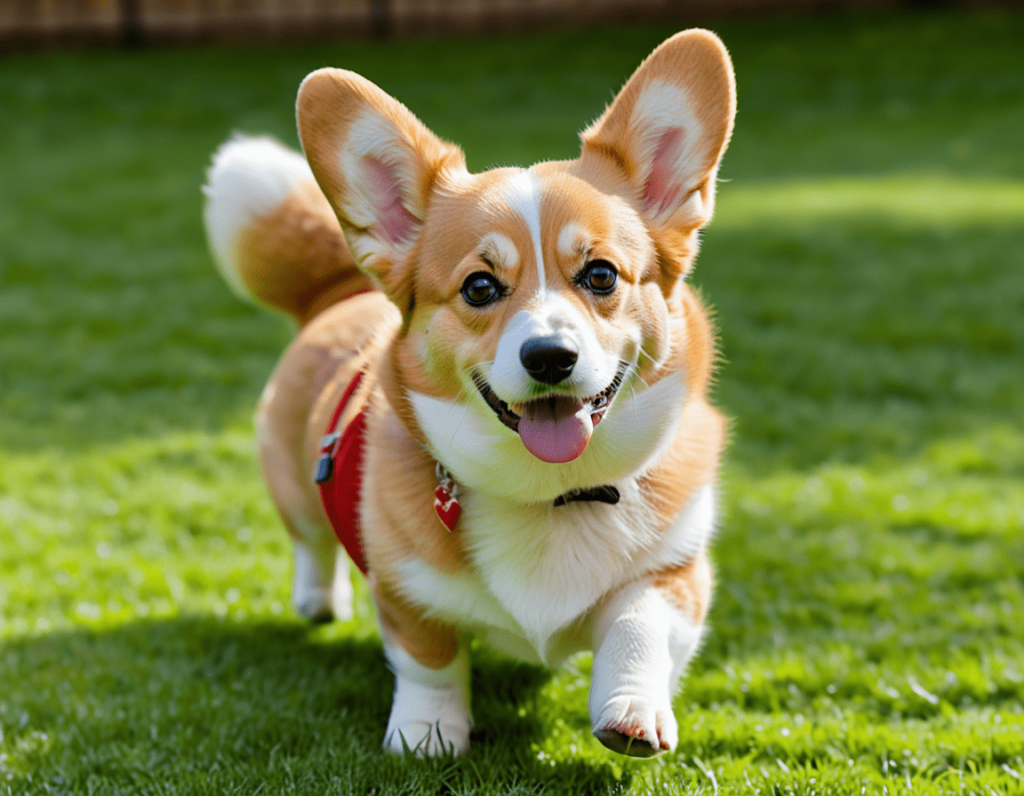
Dog Obedience Training Tips
Training your dog can feel a bit like trying to teach a cat to swim—it’s a challenge! But with the right approach, patience, and a few treats, you can turn your rambunctious furball into a well-behaved companion. In this article, we’ll explore some effective dog obedience training tips that are easy to understand and implement. Plus, we’ll sprinkle in some humour along the way because, let’s face it, dog training can be a comedy show in itself!
Why Dog Obedience Training Matters
Before we dive into the tips, let’s chat about why obedience training is essential. Training your dog helps establish good behaviour, strengthens your bond, and keeps your furry friend safe. Plus, imagine how impressed your friends will be when your dog can do tricks! You’ll be the star of the neighbourhood, and your dog will get all the treats they can handle—talk about a win-win!
Essential Dog Obedience Training Tips
1. Start Early
The earlier you start training, the better! Puppies are like little sponges, soaking up everything around them. Start with basic commands like “sit,” “stay,” and “come” as soon as you bring your new pup home. Just remember, training should be a positive experience. If your dog thinks of training like a trip to the vet, you’ll have a tougher time getting them to cooperate!
2. Use Positive Reinforcement
Positive reinforcement is the way to go! Reward your dog with treats, praise, or playtime when they follow your commands. It’s like giving them a gold star for being awesome! Just think of it as a motivational pep talk: “You sat? Here’s a treat! You came when called? Here’s another! You didn’t eat the sofa today? Have a whole parade of treats!”
3. Keep Training Sessions Short and Fun
Dogs have the attention span of a squirrel on caffeine, so keep your training sessions short—about 5 to 10 minutes. Make it fun! Incorporate games like hide and seek or fetch to reinforce commands. You want your dog to associate training with a good time. If training becomes a snoozefest, your dog might just decide that lying on the couch is a much better use of their time.
4. Be Consistent
Consistency is key! Use the same commands and rewards every time to avoid confusing your dog. If one day you say “sit” and the next day you say “down,” your pup might just tilt their head and look at you like you’ve lost your marbles. Everyone in the household should use the same commands and rules to reinforce the training. Teamwork makes the dream work.
5. Practice in Different Environments
Once your dog masters a command at home, it’s time to practice in different environments. Dogs can behave differently in new places, so take your training on the road—parks, sidewalks, or even the backyard. Just be sure to bring along some treats to keep their focus. Your dog will think they’re on a grand adventure rather than just practicing “sit” again!

6. Use Hand Signals
Dogs are great at reading body language, so consider using hand signals along with verbal commands. For example, you can raise your hand to signal “sit” while saying the word. Your dog might appreciate the gesture and think, “Oh, this human is using their fancy paws!” Plus, it can be helpful in noisy environments where your voice might not carry as well.
7. Stay Patient and Calm
Training can be frustrating, especially if your dog seems more interested in chasing their tail than learning commands. Remember to stay patient and calm—dogs can sense your emotions. If you’re frustrated, they might get anxious and stop listening altogether. Take a deep breath, count to ten, and if all else fails, just remember: a wagging tail is still better than a grumpy human!
8. Socialization is Key
Socialisation is an essential part of obedience training. Expose your dog to various people, animals, and environments to help them feel comfortable in different situations. Take them to the dog park, or invite friends over for a puppy playdate. Just be sure to supervise, as not all dogs are as friendly as they should be! Your dog will learn that the world isn’t as scary as it seems.
9. Avoid Negative Reinforcement
Instead of punishing your dog for unwanted behaviour, redirect their energy and reward them for positive behaviour. For example, if your dog is barking at the mailman, distract them with a toy or treat instead of scolding them. Punishing can create fear and anxiety, which isn’t what we want in our happy-go-lucky pups. Remember, we’re aiming for obedience, not a canine horror film!
10. Seek Professional Help if Needed
If you’re struggling with training, don’t hesitate to seek help from a professional dog trainer. They can provide tailored advice and techniques that suit your dog’s personality and needs. Think of it as getting a personal trainer for your dog—who wouldn’t want that?
11. Create a Training Schedule
Establishing a regular training schedule can be beneficial for both you and your dog. Try to train at the same time each day, whether it’s morning, afternoon, or evening. This consistency helps set expectations for your dog and allows them to anticipate training as part of their routine. Think of it as the dog version of a daily yoga class—except instead of downward dog, you’re working on “stay!”
12. Make Use of High-Value Treats
Sometimes, regular treats just won’t cut it, especially when you’re trying to teach a challenging command. Use high-value treats—those special goodies that your dog can’t resist, like bits of chicken or cheese. These are the treats that make your dog think, “Wow, this human must really love me!” And they’ll be much more inclined to cooperate when there’s something delicious at stake.
13. Mix Up the Commands
Dogs can get bored doing the same commands repeatedly. To keep their interest piqued, mix things up by adding new commands or tricks. Once your dog masters the basics, try teaching them fun tricks like “roll over” or “play dead.” Who wouldn’t want a pup that can roll over on command? It’s sure to impress all your friends—maybe even the neighbours too!
14. Use Distractions for Advanced Training
Once your dog has a good grasp of basic commands, it’s time to add distractions. This will help your dog learn to focus even when the world is full of exciting (or potentially distracting) things. Have a friend walk by with a treat or play with another dog nearby while you ask your dog to “stay” or “come.” It’s like an obedience obstacle course—who doesn’t love a challenge?
15. Celebrate Successes, Big and Small
Every little victory in training deserves to be celebrated! Did your dog finally sit on command without you having to use a treat as bait? Throw a mini party! Did they refrain from jumping on guests for an entire evening? Break out the confetti (or just some extra pets and praise)! Celebrating these successes will help reinforce your dog’s positive behaviour and keep the training atmosphere fun and enjoyable.

Common Mistakes to Avoid
Training is a learning process, not just for your dog but for you too. Here are some common mistakes to avoid during your dog obedience training journey:
1. Inconsistency in Commands
As mentioned earlier, using different commands for the same behaviour can confuse your dog. If you say “come” one day and “get over here” the next, your pup might just look at you as if you’ve grown a second head. Stick to a set vocabulary!
2. Expecting Immediate Results
Training takes time and patience. Don’t expect your dog to master a new command overnight. Just like you didn’t learn to ride a bike in one day, your dog needs practice. So take a deep breath, keep the treats handy, and remember: slow and steady wins the race!
3. Ignoring Your Dog’s Signals
Pay attention to your dog’s body language. If they seem anxious or unwilling to participate, it may be a sign to take a break. Forcing training can lead to resentment. Instead, respect their feelings and try again later. Sometimes, a nap or a walk can do wonders to reset the mood!
4. Neglecting to Vary Rewards
Using the same treats or praise can lead to boredom. Keep your dog guessing and engaged by changing up the rewards. One day, they might get a delicious treat, and the next, it might be a favourite toy or an extra-long belly rub. Variety is the spice of life!
Final Thoughts
With these dog obedience training tips and a sprinkle of humour, you can turn your pup into a well-behaved companion who knows how to follow the rules (mostly). Remember, training is about building a strong bond with your furry friend. Embrace the journey, laugh at the mishaps, and celebrate the successes.
Your dog may not always be perfect, but they’ll always be perfect for you. So grab those treats, show off your training skills, and enjoy every moment with your playful, lovable pup. After all, a happy dog equals a happy home! Here’s to a tail-wagging adventure filled with training, treats, and plenty of love!
Dog Obedience Training Tips: FAQs
1. What is the best age to start obedience training for my dog?
The best age to start obedience training is as early as possible, ideally when your dog is a puppy, around 8 weeks old. Puppies are like little sponges, ready to soak up knowledge! However, it’s never too late to train an older dog. Just remember, the training process may take a bit longer.
2. How long should training sessions be?
Training sessions should be kept short and engaging—about 5 to 10 minutes is ideal. Dogs have short attention spans, so frequent, brief sessions are more effective than long, drawn-out ones. Think of it as a quick snack rather than a full-course meal!
3. What commands should I teach my dog first?
Start with basic commands such as “sit,” “stay,” “come,” and “down.” These fundamental commands form the building blocks for more advanced training. Plus, they can help keep your dog safe in various situations!
4. Is positive reinforcement really effective?
Absolutely! Positive reinforcement, which involves rewarding your dog for desired behaviours, is one of the most effective training methods. It encourages your dog to repeat good behaviour because they associate it with something pleasant. After all, who doesn’t love treats and praise?
5. What if my dog doesn’t respond to training?
If your dog isn’t responding to training, try changing your approach. Use higher-value treats, keep training sessions fun, or ensure you’re in a distraction-free environment. If issues persist, consider consulting a professional dog trainer for tailored advice

6. How can I socialise my dog during training?
Socialisation is essential and can be incorporated into training by exposing your dog to various people, dogs, and environments. Take them for walks, invite friends over, or visit dog parks. The key is to ensure these experiences are positive and not overwhelming for your pup.
7. How do I deal with unwanted behaviours?
Redirect unwanted behaviours by offering an alternative, more acceptable behaviour. For example, if your dog is chewing on furniture, provide a designated chew toy instead. Consistently rewarding good behaviour while redirecting bad habits will help reinforce the right actions.
8. Is it okay to train my dog using harsh methods?
No, it’s not recommended to use harsh methods or punishment. This can create fear and anxiety, leading to more behavioural issues. Focus on positive reinforcement and redirection to encourage good behaviour without stress.
9. How often should I train my dog?
Aim to train your dog daily, even if it’s just for a few minutes. Regular practice helps reinforce what they’ve learnt and keeps their skills sharp. Consistency is key to success!
10. When should I consider hiring a professional trainer?
Consider hiring a professional trainer if you’re struggling with training, have an aggressive dog, or simply want expert guidance. A professional can provide personalised techniques tailored to your dog’s needs, helping you both succeed.
Conclusion
Training your dog can be a fun and rewarding experience, filled with moments of laughter and joy. With these FAQs and tips, you’re well on your way to raising a well-mannered pup who brings happiness to your home. Remember, patience, consistency, and a dash of humour will make the journey enjoyable for both you and your furry friend!


